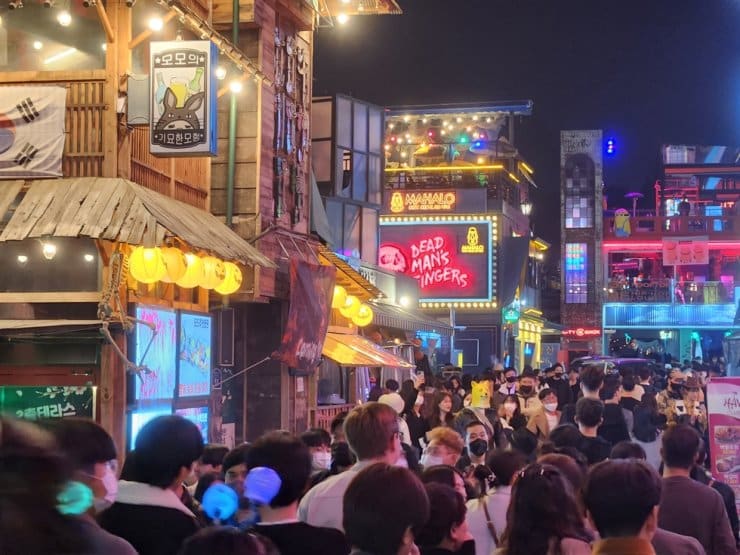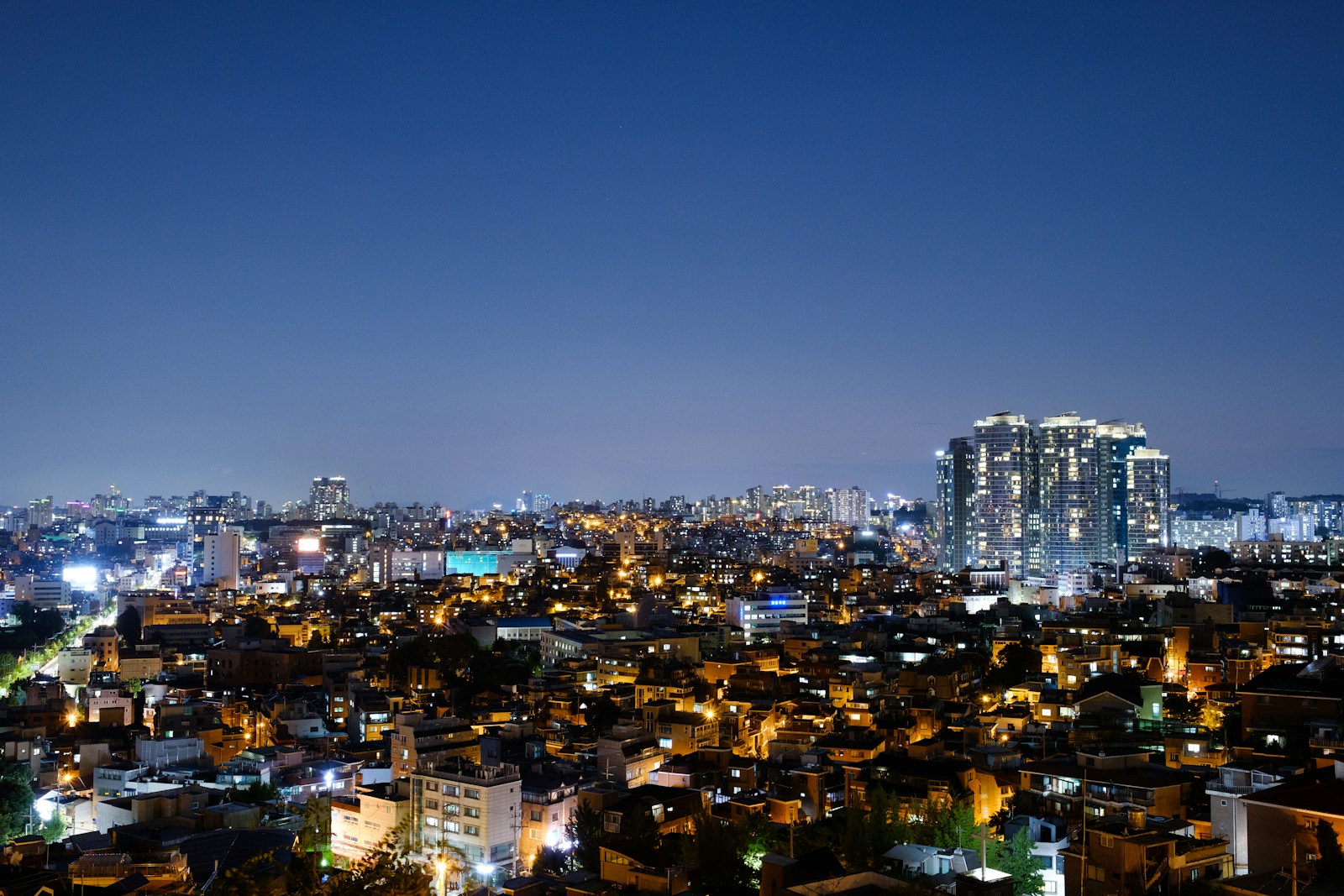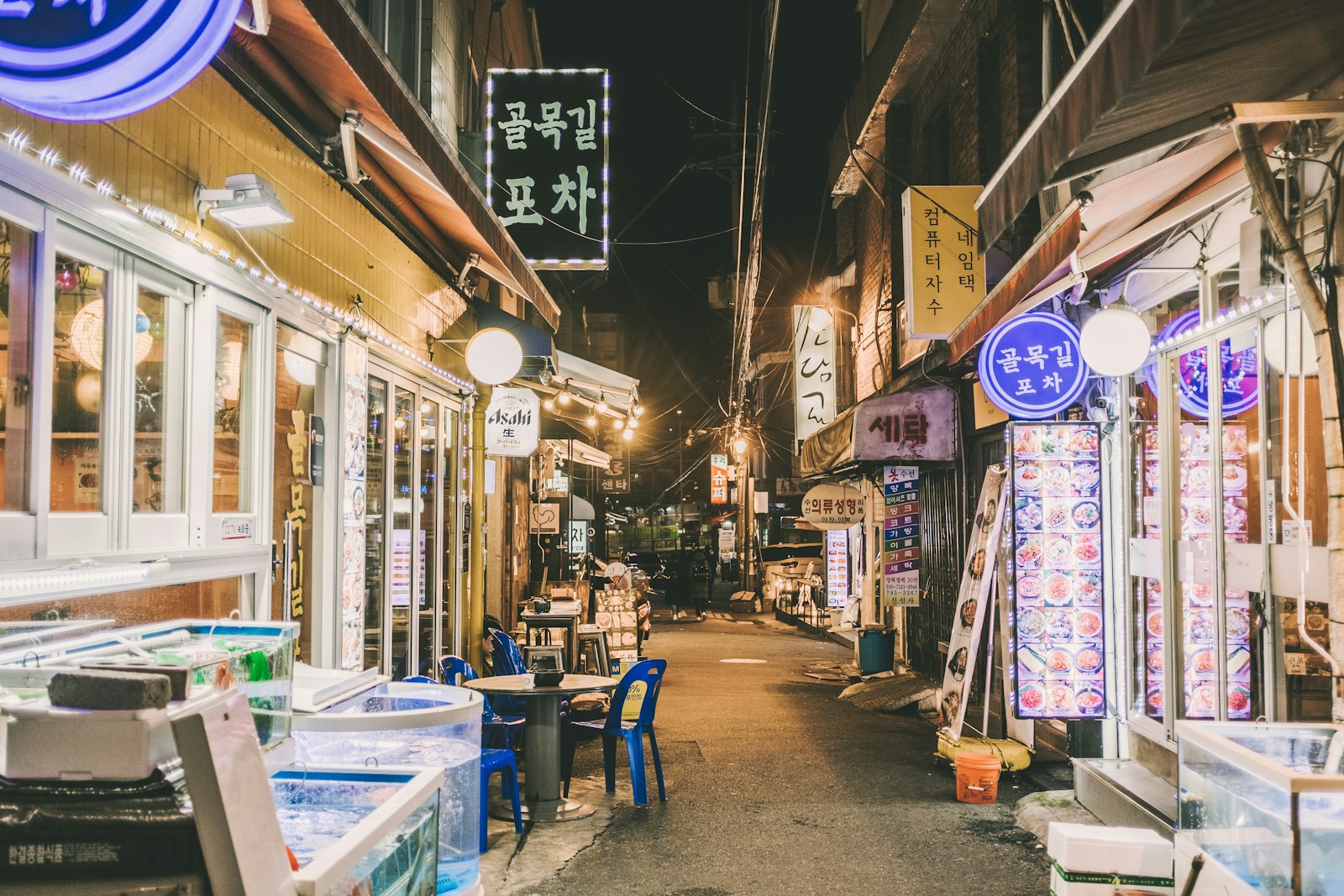Physical Address
304 North Cardinal St.
Dorchester Center, MA 02124
Physical Address
304 North Cardinal St.
Dorchester Center, MA 02124

Itaewon, a flourishing international district located in Seoul, South Korea, presents an intriguing amalgamation of diverse cultures, cuisines, and shopping experiences that make it a popular destination among foreigners. Its unique standing in Yongsan-gu, coupled with its evolution from a residential area during Japanese colonial rule to a buzzing hub of South Korean international commerce, has rendered Itaewon a fascinating study in cultural adaptation and transformation.
The close proximity of the district to Yongsan Garrison, a primary American military base, has further influenced its commercial and social landscape, creating an environment that has a distinctly global flavor. However, as Itaewon stands on the cusp of significant change with the impending relocation of the military base, questions arise about the future of this vibrant district. Will it maintain its multicultural identity and economic vitality in the face of such a transformative event?

Nestled in the heart of Yongsan-gu, to the south of Myeongdong and north of the Han River, lies Itaewon, a vibrant international district renowned for its multicultural dining, shopping, and nightlife. Known for its foreigner-friendly atmosphere, Itaewon has become a cultural melting pot attracting locals, tourists, and American military personnel from the nearby Yongsan Garrison.
The district’s strategic location has allowed it to thrive, offering a myriad of international cuisines, diverse shopping opportunities, and an active nightlife. Despite its past reputation as a rowdy and unrefined district, Itaewon has undergone significant transformations. It now boasts upscale restaurants and shops, replacing seedy establishments, making it a favored destination for a diverse demographic.
While the contemporary allure of Itaewon is undeniably tied to its vibrant blend of international cultures, its intriguing historical transformation from a residential area to a bustling district casts a compelling light on its current identity.
Originally a residential region occupied by Japanese colonialists before World War II, Itaewon underwent a significant metamorphosis post-war as American soldiers established a base nearby. Itaewon soon became a wealthy neighborhood for soldiers after the Korean War, attracting a wide array of international visitors.
Despite its past reputation as a rowdy district, Itaewon has gradually evolved, replacing seedy establishments with upscale eateries and stores. This historical journey has significantly contributed to Itaewon’s identity as a diverse, international district today.
Accessibility in Itaewon is enhanced by its well-connected public transportation system. The Itaewon subway station, part of Seoul’s extensive Line 6, serves as a vital link, making it convenient for visitors to navigate other parts of the city. This station places you at the heart of the district, allowing easy access to its diverse attractions. Additionally, numerous local buses operate within the area, offering yet another efficient way to explore Itaewon and beyond. Taxis and rideshare services are readily available, providing flexible travel options for both locals and tourists. The straightforward nature of these systems, with clear English signage, makes traveling in and around Itaewon straightforward for international visitors.
Over the years, Itaewon has undergone a remarkable cultural metamorphosis, transitioning from a district known for its rowdy and seedy establishments to a vibrant hub of international cuisine, upscale shopping, and diverse nightlife. This transformation can be attributed to the influx of global influences and the district’s strategic positioning near the Yongsan Garrison, the headquarters of the U.S Military. Upscale eateries and boutiques have replaced the formerly seedy establishments, attracting a diverse crowd, including locals and tourists.
The transformation also extended to Itaewon’s nightlife, which has become more diverse and inclusive, with areas like Hooker Hill emerging as centers for the LGBTQ+ community. This cultural shift has established Itaewon as an international oasis within Seoul, celebrated for its diversity and vibrancy.
Itaewon’s vibrant international atmosphere is further enriched by the presence of several embassies and consulates. This diplomatic presence not only adds to the multicultural fabric of the district but also offers practical support to expatriates and travelers alike. These institutions play a significant role in fostering international relationships and cultural exchange. Embassies, such as those of Turkey and the Philippines, are located in the vicinity, making Itaewon a hub for diplomatic activity. This presence underscores Itaewon’s role as a gateway between South Korea and the world, providing a unique blend of cultural exposure and international connectivity.
A critical factor contributing to Itaewon’s evolution and unique cultural dynamism is the presence of Yongsan Garrison, the headquarters of the U.S Military. Since the Korean War, the base has significantly influenced the local economy, with many businesses catering to American military personnel.
Its impact extends beyond the economic sphere into social and cultural dimensions. By fostering an environment receptive to foreign cultures, the Garrison has helped shape Itaewon into a hub for internationalism within Seoul.
However, with the planned relocation of the Garrison to Pyeongtaek, there is uncertainty about the future socio-economic landscape of Itaewon. The departure of the military personnel clientele could potentially affect local businesses, thereby instigating a new phase of transformation in the district.
The planned relocation of the Yongsan Garrison to Pyeongtaek poses significant economic challenges for Itaewon, particularly for businesses that have thrived on the patronage of military personnel. The following points summarize the potential impact:

Diving into Itaewon’s culinary landscape reveals a rich tapestry of international flavors and dining experiences. This vibrant district serves as Seoul’s gastronomical melting pot, offering an array of cuisines from around the globe. Authentic Turkish, Pakistani, Mexican, and Czech eateries stand alongside Korean restaurants, offering a diverse range of choices for the discerning food lover. The food scene is not limited to sit-down restaurants.
Street vendors offer local delicacies, adding to the area’s dynamic food culture. The district’s upscale restaurants serve as testament to Itaewon’s evolution from a seedy party district to a cosmopolitan dining destination. Itaewon’s food scene is a celebration of the area’s international heritage and is a must-visit for any food enthusiast visiting Seoul.
The lively streets of Itaewon are not only known for their eclectic food options but also for hosting a variety of annual events that reflect Seoul’s cosmopolitan spirit. A highlight is the Itaewon Global Village Festival, a vibrant celebration that showcases the cultural diversity of the district through parades, performances, crafts, and culinary delights from around the world. Another popular event is the Itaewon Halloween Festival, renowned for its creative costumes and festive atmosphere, drawing crowds from all over South Korea. These festivals punctuate Itaewon’s calendar with cultural festivities that attract both locals and international visitors, offering a glimpse into the district’s global heartbeat.
Beyond its culinary delights, Itaewon also boasts an eclectic shopping scene that caters to both locals and international visitors.
Boasting a vibrant and eclectic nightlife, Itaewon serves as an entertainment hub where locals, tourists, and American soldiers alike can revel in the district’s vast array of clubs, bars, and live music venues. Known for attracting a diverse crowd, Itaewon’s nightlife is a fusion of cultures, with establishments featuring both local and international music genres.
Popular venues include the multi-story Club Made and the intimate All That Jazz. Notably, Itaewon is also home to the city’s most prominent LGBTQ+ scene, with numerous gay-friendly bars and clubs. For those seeking a more relaxed evening, the district offers a variety of late-night eateries, serving everything from Korean barbecue to international cuisine. This dynamic and inclusive atmosphere is what makes Itaewon’s nightlife truly special.
In the heart of Itaewon, an area known as Hooker Hill has evolved into a safe haven for the Korean gay community, making Itaewon one of the few places in Seoul where homosexuality is openly tolerated. This development has been a significant step forward in Korea’s traditionally conservative society.
Establishments like gay bars and clubs are prominent features, offering spaces of acceptance and celebration. Known venues such as Soho and Trance embody this spirit, drawing a diverse mix of visitors. The community is also nurtured through events like gay pride gatherings and LGBTQ+ themed nights, which are regularly held within the district. These initiatives contribute to a supportive atmosphere, enhancing Itaewon’s reputation as an inclusive space where diversity is not only acknowledged but celebrated. The acceptance found in Itaewon makes it a cherished locale for the LGBTQ+ community within the broader context of Seoul’s social landscape.
Itaewon plays a significant role in the Korean Wave, or Hallyu, which has taken global pop culture by storm. As a melting pot of cultures, the district serves as a popular backdrop for K-pop music videos and Korean dramas, contributing to the global spread of Korean culture. The presence of trendy eateries and shops frequented by celebrities adds to its allure, making it a hotspot for both fans and artists. Itaewon’s influence extends to the fashion sector, where street styles often anticipate upcoming trends seen around the world. It acts as a launchpad for cultural exports, showcasing the dynamism of Korean music, fashion, and media to an international audience.
The significance of Itaewon to both locals and foreigners lies in its unique fusion of diverse cultures, international cuisines, and welcoming atmosphere that sets it apart from other districts in Seoul. This district is a symbol of multiculturalism, offering a diverse range of experiences that cater to both Korean and international tastes. Itaewon is a cultural melting pot where one can experience global flavors without leaving Seoul.
For foreigners, it provides a comforting slice of home, while locals enjoy the novelty and diversity it offers. The area’s transformation from a rowdy district to an upscale neighborhood reflects its ever-evolving character. The potential relocation of the Yongsan Garrison, however, may challenge Itaewon’s resilience and adaptability in the future.
Itaewon, a multicultural district in Seoul, is known for hosting various international festivals and events that attract both locals and tourists. Some popular ones include the Itaewon Global Village Festival, a street party celebrating cultural diversity, and the Itaewon Halloween Festival, which is one of the largest Halloween events in Korea. Additionally, the area celebrates various national holidays, like the American 4th of July, due to its significant foreigner population.
When visiting Itaewon, tourists should remain vigilant, particularly at night, as with any busy urban area. It’s advisable to stay in well-lit, crowded areas and avoid isolated spots. Be cautious of pickpockets in crowded places and make sure your personal belongings are secure. Also, bear in mind that whilst Itaewon is generally tolerant, local customs and norms should be respected. It’s also recommended to have a copy of your passport and emergency contact numbers at all times.
The public transportation system in Itaewon is quite efficient and tourist-friendly. The area is well-connected by Seoul’s extensive subway and bus network, making it easy for tourists to navigate. The Itaewon subway station on Line 6 serves as the main transportation hub. Additionally, numerous local and intercity buses operate in the area. Clear signages in English further facilitate easy navigation for foreign tourists.
Itaewon, while renowned for its vibrant nightlife and diverse culinary scene, also hosts several prominent landmarks. The War Memorial of Korea, a significant historical site, is located nearby. Itaewon is also home to the Leeum Samsung Museum of Art, showcasing both traditional and contemporary art pieces. Additionally, the N Seoul Tower, offering panoramic city views, is within reach. Lastly, the Itaewon Antique Furniture Street provides a unique cultural experience with its array of antique shops.